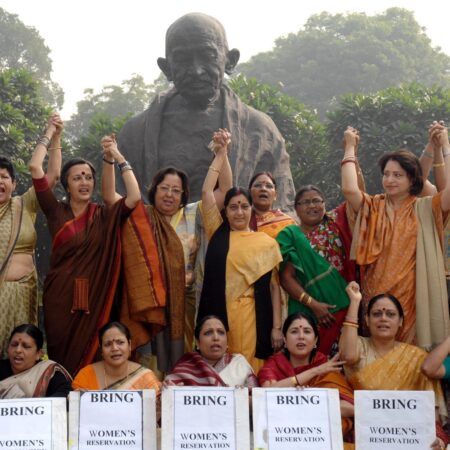Table of Contents
Shaktikanta Das, the governor of the RBI, received the “Governor Of The Year” award at the 2024 Central Banking Awards. Raghuram Rajan, a former governor of the RBI, received the honor in 2015.

Shaktikanta Das has been recognised for his leadership, and for his handling of multiple crises that have arisen during his tenure. During his employment, Das has assisted in steering the ship through numerous challenges, including the Covid-19 epidemic and the Russia-Ukraine war. The RBI governor has overseen world-leading payments innovation, solidified important reforms, and guided India through difficult times.
About Shaktikanta Das, the Governor of the RBI
Born in Bhubaneswar, Das was schooled at the Demonstration Multipurpose School, Bhubaneswar, and then obtained bachelor’s (BA) and master’s degrees (MA) in history from St. Stephen’s College at the University of Delhi. He was awarded D.Litt. by Utkal University in 2021.
Urjit Patel, who departed the position abruptly and cited “personal reasons,” was replaced by Das, 66, who was appointed to the top position at the RBI back in December 2018. Das, a long-serving officer in the Tamil Nadu cadre, also played a key role in creating the MPC. Das, an IAS officer from the Tamil Nadu batch of 1980, was appointed Union Revenue Secretary in June 2014.

Das took office in December 2018, just as the financial sector in India was on the brink of collapse and moving through the first and second waves of the coronavirus. He has overseen the resolution of several collapsed non-bank financial companies and the steady improvement of the banking sector, which had long been a drag on growth.
Central Banking Publications specializes in public policy and financial markets
Central Banking Publisher is a global magazine of economic research. A financial publisher with a focus on central banks and other international financial organizations, Central Banking Publications specializes in public policy and financial markets.
According to the publication that announced the award, India’s GDP has increased by about 90% over the past ten years, and its GDP per capita has increased by about 70%. As a result, the average Indian now has an annual income of $2,400, which is $1,000 more than it did in 2010.
Although poverty is still widespread, according to the multidimensional statistic of the United Nations, it has decreased from 55% to 16% in that time.
In resolving the Covid problem, Das “had possibly his biggest impact, seeming as a voice of calm amid the fear, and navigating the RBI skillfully between tremendous political pressures on one side and economic disaster on the other,” according to the article.
Along with managing the COVID-19 pandemic’s economic impact, Das also handled the response to Russia’s invasion of Ukraine and its inflationary effects. India’s economy has maintained its rapid growth despite the difficulties, and poverty levels have greatly decreased.
“The RBI has also wisely used its reserves to lessen the impact of the significant shocks India has experienced. Like many central banks in emerging nations, the RBI targets inflation but also adopts a comprehensive approach to stability, controlling the exchange rate to prevent sharp fluctuations, “It added.

Under Das, digital payments in the form of UPI flourished in India, making it the country with the largest real-time payments market today. In 2021, India had close to 50 billion real-time transactions. According to the IMF, UPI has had 160% yearly growth rates on average since its introduction in 2016.
Das has been an active opponent of private cryptocurrencies in India since they shot into fame, openly terming them a threat to financial stability in the country. The RBI recently rolled out the Digital Rupee, India’s Central Bank Digital Currency (CBDC), a digital token representing legal tender and is considered fiat money.
Das was the driving force behind the planning and execution of the demonetisation exercise in his capacity as economic affairs secretary.
Das was also responsible for implementing the Goods and Services Tax (GST). Shortly after the Modi government assumed office, he played a key role in advancing GST.
NBFC vs Das’s Administration
Prior to Das’s appointment, in August 2018, IL&FS, a sizable NBFC, filed for bankruptcy, causing a liquidity constraint and exposing flaws in the business plans of numerous mid-sized banks that had made sizable loans to NBFCs.

Thereafter, a number of other businesses, like Punjab and Maharashtra Co-operative Bank, also failed. Raghuram Rajan and Urjit Patel, Das’ predecessors, had previously begun certain measures to address the non-banking financial crisis, such as changing the bankruptcy code to resolve NBFCs, but more measures were put into place during Das’s administration.
They included enacting liquidity rules for non-banks and intensifying oversight of the sector’s major participants. New scale-based regulations for NBFCs went into effect in October 2022.
Notwithstanding the importance of non-banks to the Indian financial sector, the banking industry continues to be a bigger problem because it restrains expansion and occasionally poses a crisis risk to the country’s economy.
The biggest problems are faced by public sector banks (PSBs), which also face poor capital, high levels of non-performing assets (NPAs), and low loan growth. The banking industry, which at the time appeared to be in terrible shape, has, however, steadily improved since 2018.













